第28章 II(12)
It is evidently impossible that I should attempt, within the compass of a single lecture, any detailed examination of the very numerous cases reported in the Homoeopathic Treatises and Journals. Having been in the habit of receiving the French "Archives of Homoeopathic Medicine" until the premature decease of that Journal, I have had the opportunity of becoming acquainted somewhat with the style of these documents, and experiencing whatever degree of conviction they were calculated to produce. Although of course I do not wish any value to be assumed for my opinion, such as it is, I consider that you are entitled to hear it. So far, then, as I am acquainted with the general character of the cases reported by the Homoeopathic physicians, they would for the most part be considered as wholly undeserving a place in any English, French, or American periodical of high standing, if, instead of favoring the doctrine they were intended to support, they were brought forward to prove the efficacy of any common remedy administered by any common practitioner. There are occasional exceptions to this remark; but the general truth of it is rendered probable by the fact that these cases are always, or almost always, written with the single object of showing the efficacy of the medicine used, or the skill of the practitioner, and it is recognized as a general rule that such cases deserve very little confidence. Yet they may sound well enough, one at a time, to those who are not fully aware of the fallacies of medical evidence. Let me state a case in illustration. Nobody doubts that some patients recover under every form of practice. Probably all are willing to allow that a large majority, for instance, ninety in a hundred, of such cases as a physician is called to in daily practice, would recover, sooner or later, with more or less difficulty, provided nothing were done to interfere seriously with the efforts of nature.
Suppose, then, a physician who has a hundred patients prescribes to each of them pills made of some entirely inert substance, as starch, for instance. Ninety of them get well, or if he chooses to use such language, he cures ninety of them. It is evident, according to the doctrine of chances, that there must be a considerable number of coincidences between the relief of the patient and the administration of the remedy. It is altogether probable that there will happen two or three very striking coincidences out of the whole ninety cases, in which it would seem evident that the medicine produced the relief, though it had, as we assumed, nothing to do with it. Now suppose that the physician publishes these cases, will they not have a plausible appearance of proving that which, as we granted at the outset, was entirely false? Suppose that instead of pills of starch he employs microscopic sugarplums, with the five' million billion trillionth part of a suspicion of aconite or pulsatilla, and then publishes his successful cases, through the leaden lips of the press, or the living ones of his female acquaintances,--does that make the impression a less erroneous one? But so it is that in Homoeopathic works and journals and gossip one can never, or next to never, find anything but successful cases, which might do very well as a proof of superior skill, did it not prove as much for the swindling advertisers whose certificates disgrace so many of our newspapers.
How long will it take mankind to learn that while they listen to "the speaking hundreds and units, who make the world ring "with the pretended triumphs they have witnessed, the "dumb millions" of deluded and injured victims are paying the daily forfeit of their misplaced confidence!
I am sorry to see, also, that a degree of ignorance as to the natural course of diseases is often shown in these published cases, which, although it may not be detected by the unprofessional reader, conveys an unpleasant impression to those who are acquainted with the subject. Thus a young woman affected with jaundice is mentioned in the German "Annals of Clinical Homoeopathy" as having been cured in twenty-nine days by pulsatilla and nux vomica. Rummel, a well-known writer of the same school, speaks of curing a case of jaundice in thirty-four days by Homoeopathic doses of pulsatilla, aconite, and cinchona. I happened to have a case in my own household, a few weeks since, which lasted about ten days, and this was longer than I have repeatedly seen it in hospital practice, so that it was nothing to boast of.
Dr. Munneche of Lichtenburg in Saxony is called to a patient with sprained ankle who had been a fortnight under the common treatment.
The patient gets well by the use of arnica in a little more than a month longer, and this extraordinary fact is published in the French "Archives of Homoeopathic Medicine."
In the same Journal is recorded the case of a patient who with nothing more, so far as any proof goes, than inluenza, gets down to her shop upon the sixth day.
And again, the cool way in which everything favorable in a case is set down by these people entirely to their treatment, may be seen in a case of croup reported in the "Homoeopathic Gazette " of Leipsic, in which leeches, blistering, inhalation of hot vapor, and powerful internal medicine had been employed, and yet the merit was all attributed to one drop of some Homoeopathic fluid.
I need not multiply these quotations, which illustrate the grounds of an opinion which the time does not allow me to justify more at length; other such cases are lying open before me; there is no end to them if more were wanted; for nothing is necessary but to look into any of the numerous broken-down Journals of Homoeopathy, the volumes of which may be found on the shelves of those curious in such matters.